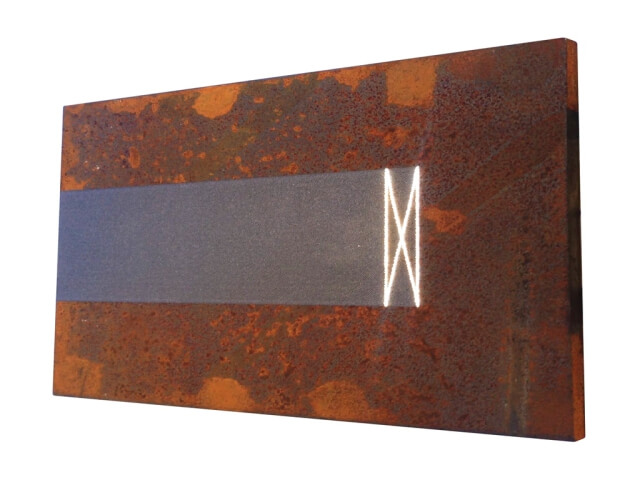Laser Knowledge
Principles And Advantages Of Laser Cleaning Machine
Laser cleaning technology refers to the use of high -energy laser beam to irradiate the surface of the workpiece to make the surface dirt, rust spots, or coating instantly evaporate or peel off, thereby achieving the process of cleaning. The laser cleaning mechanism is mainly based on the absorption of laser energy on the surface pollutants on the object, or vaporization volatilization, or instantly heating and expanding to overcome the adsorption of particles on the surface. You can also do not damage the substrate. At present, this method has become a supplement and extension of the traditional cleaning method, and has shown a broad application prospect due to many of its inherent advantages. Have the following characteristics:

Advantages of Laser Cleaning
- Environmentally Friendly: Reduces or eliminates the need for chemical solvents and abrasive materials, making it a greener cleaning option.
- Highly Effective: Capable of removing a wide range of contaminants, including rust, oil, and paint, from various surfaces.
- Precision: Allows for selective cleaning of specific areas without affecting adjacent surfaces.
- Minimal Waste: Produces less waste compared to traditional cleaning methods, as contaminants are vaporized and can often be captured for disposal.
- Safety: Reduces the risk of injury associated with mechanical cleaning methods, as there are no rotating parts or chemicals involved.
- Cost-Effective: Can lower labor costs and reduce downtime, as the cleaning process is often faster than traditional methods.
- Versatile Applications: Suitable for a variety of industries, including manufacturing, automotive, aerospace, and conservation.

Principles of Laser Cleaning
- Laser Emission: A laser emits a focused beam of light that is directed at the surface to be cleaned.
- Material Interaction: The intense energy of the laser is absorbed by contaminants (like rust, paint, or dirt) and rapidly heats them up, causing them to evaporate or be ejected from the surface.
- Controlled Process: The cleaning process can be precisely controlled in terms of laser intensity, pulse duration, and movement speed, allowing for effective cleaning without damaging the underlying material.
- Non-Contact Cleaning: Since the laser does not physically touch the surface, it minimizes the risk of abrasion or mechanical wear.
Applications
Laser cleaning can be widely used in various industries such as the aerospace, shipbuilding industry, automobile manufacturing industry, and electronics industry, because laser cleaning can not only be used to clean organic pollutants, but also use it to clean the inorganic objects, including metal rust. Metal particles, dust, etc. Laser cleaning is widely used for the following cleaning objects and mature technology.
(1) Laser rust removal. For Class A and B rust, laser can be easily removed. After cleaning, the metal surface can restore white and bright metal.
(2) Laser removal. Compared with the traditional polishing and paint, laser removal is not only efficient, labor costs are low, but also do not cause damage to the substrate. The cleaning effect is far better than the traditional painting method. Therefore, it can be applied to the entire aircraft paint and the tap with paint.
(3) Laser removal of aluminum alloy oxidation layer. The aluminum alloy oxidation layer will affect the quality of aluminum alloy welding, reduce the mechanical properties of the welding joint. Using laser cleaning can replace the traditional mechanical grinding, pickling alkali washing and other processes. The efficiency is higher, the quality is controllable, fast and convenient, and environmental protection.
(4) Laser removal of oil. For oil pollution cleaning, traditional methods generally use chemical cleaning. Chemical cleaning is likely to cause crudeness and environmental pollution on the surface of the cleaning object. Laser cleaning is a green cleaning method. It will not cause burden on the environment while easily removing oil.
(5) Preparatory processing before welding. Laser pre -processing can remove water and oil attached to the surface of the cleaning object, effectively reduce the oxygen content, and improve the welding quality. Relatively unwashed welded seams, after laser cleaning, the performance of the welding seams is significantly improved
(6) After welding. The unspiring weld after welding may affect the value of the product. Therefore, the welded seam cleaning is necessary. Laser cleaning can be applied to the post -welding treatment of aluminum alloy, titanium alloy and other materials.
(7) Cultural relic recovery. Laser cleaning can also be used in cultural relics such as stone statues, calligraphy and painting, antique appliances.
Laser cleaning technology represents a modern and efficient alternative to traditional cleaning methods, offering numerous benefits across various industries. If you need further details or specific applications, feel free to ask!

IGOLDEN BLOG
Thank you for visiting the iGOLDENCNC website. iGOLDENCNC is the professional supplier of CNC machinery application solution, within the business of producing and selling CNC machinery and accessories.